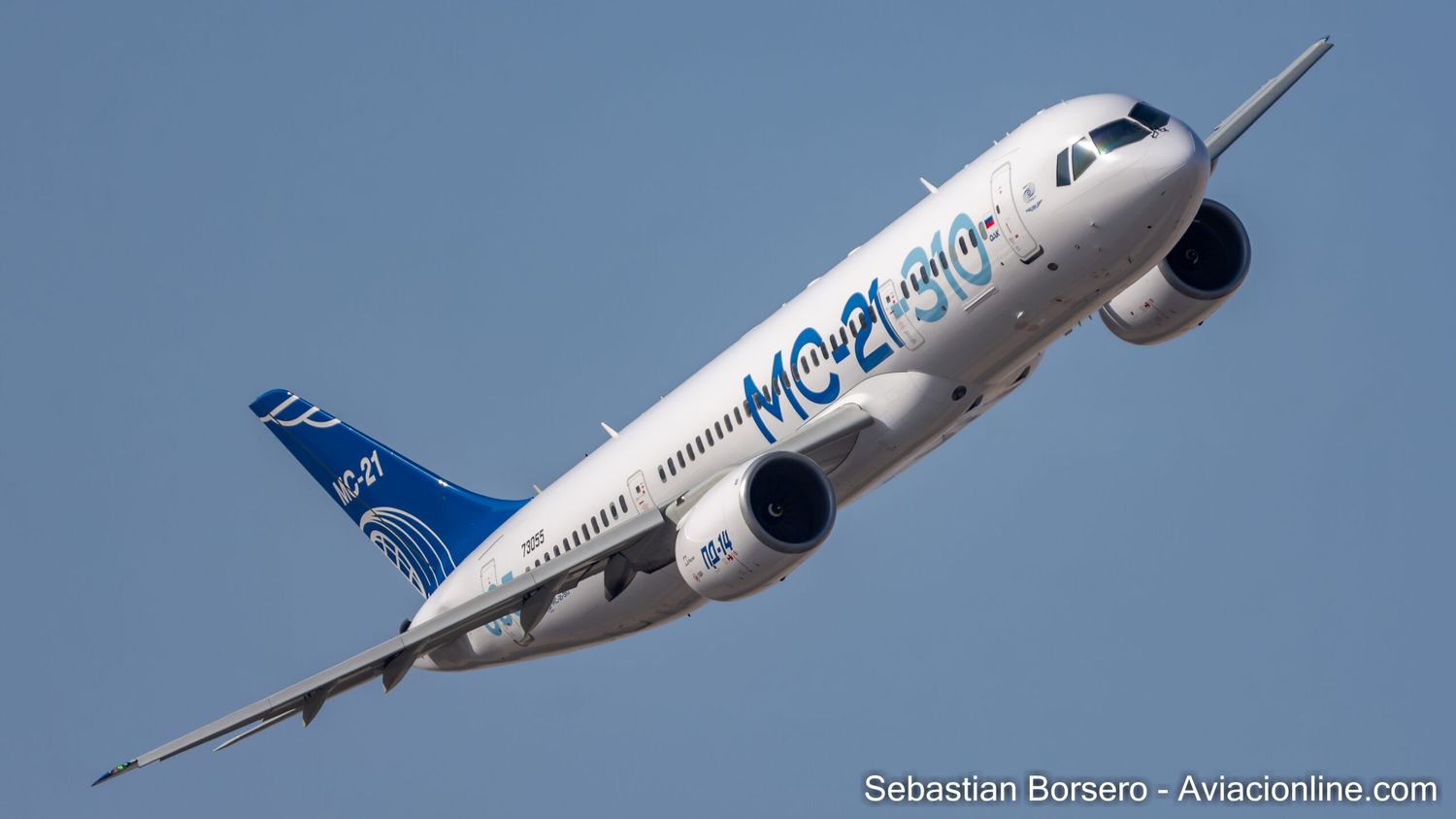Rostec, the Russian state-owned company in charge of most of the country’s research and development, continues to replace foreign parts of its MC-21 with Russian components. Thus, the model practically became independent of Western developments, which have disappeared from Russia as a result of the invasion of Ukraine and the consequent sanctions.
«Black Wing» without Western assistance
First, the company completed the development of the new carbon fiber wing for the MC-21-300. The composite wing, nicknamed «black wing» because of the characteristic color of carbon fiber, is now mass-produced from domestic materials. In charge of manufacturing is AeroComposite, a subsidiary of United Aircraft Corporation, itself part of the Rostec conglomerate. According to the company, this was made possible by a foreign-composite substitution program.
According to Rostec, the MC-21 is 40% built of composite materials. This is the first Russian aircraft –and according to the manufacturer the first in the world in its class– to incorporate a composite wing. While composite materials are widely used on wide-body models, narrow-body aircraft have not seen such technology applied on a massive scale. The composite wing for the MC-21 was developed in-house by AeroComposite. The company is responsible for the entire production cycle.

According to the designers of the MC-21, using these materials has several advantages over traditional metal constructions. Composite materials make it possible to create a wing with a more optimized aerodynamic shape that is also lighter, which reduces fuel consumption. Carbon fiber allows the model’s wing to achieve an aspect ratio (the result of dividing the length of the wing by its chord) of 11.5. The model’s Western cousins are significantly inferior in this respect: the 737 MAX has a wing with an aspect ratio of 10.16 and the Airbus A320neo’s is 10.3. Thanks to this aerodynamic superiority, the MC-21’s designers point out that it is 6% more fuel efficient than its competition.
Goodbye Pratt & Whitney, hello Aviadvigatel
Another of the Russian components of the MC-21 will be the engines. Just a few days ago a new flight of the model was carried out with domestic Aviadvigatel PD-14 propulsion plants under the wing.
On August 9, the hundredth flight of the aircraft with serial number 73005 took place in Zhukovsky, near Moscow, which is in charge of carrying out the certification program at the Flight Research Institute. At this stage, the main objective is the replacement of the Pratt & Whitney P&W1400 engines.
For the flight tests, United Engine Corporation (also part of Rostec) supplied five engines to Irkut. Vladimir Artyakov, Rostec’s deputy CEO, noted in this regard: «about 240 flights are planned in the certification program, which will be performed by two aircraft. The 100th flight was successful and the certification program is proceeding according to plan.»
These engines are being tested and integrated with the hydraulic, electrical, and air conditioning systems. The tests involve several simulations of abnormal situations: shutdown of one of the engines in flight, landing with one engine, engine failure during takeoff, abnormal climb gradients, and descents from different altitudes with only one engine. Konstantin Popovich, Irkut’s deputy CEO, added that «flight testing of the PD-14 is a key stage. This is the road to certification and an opportunity to develop optimal engine operating modes.»
The PD-14 is the first modern turbofan engine created in Russia. The unit produces 14 tons of thrust, weighs 2870 kg and has a 1900 mm diameter fan. The first flight of the MC-21 with Russian engines took place on December 15, 2020.


Comentarios
Para comentar, debés estar registrado
Por favor, iniciá sesión